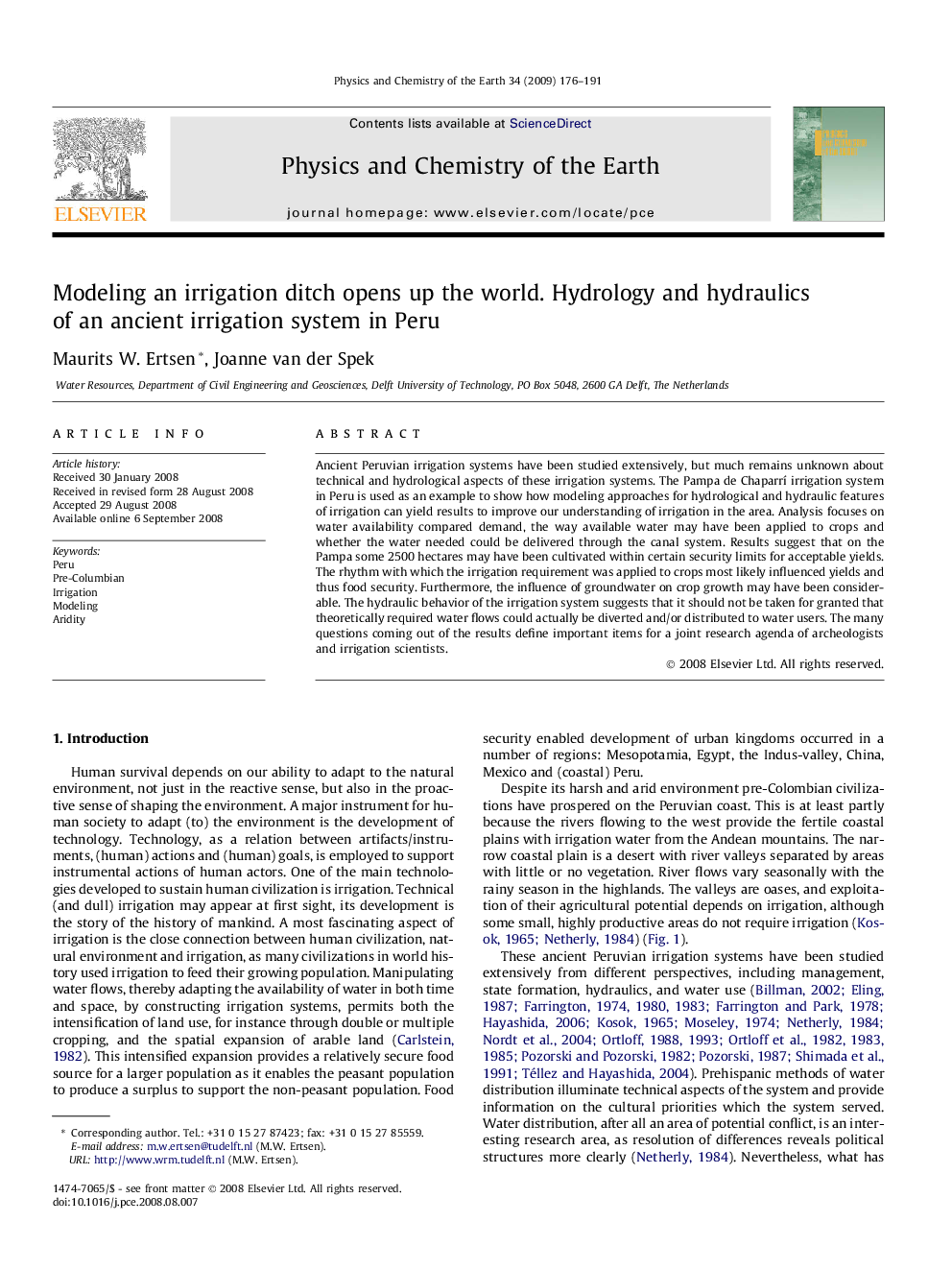| Article ID | Journal | Published Year | Pages | File Type |
|---|---|---|---|---|
| 4722240 | Physics and Chemistry of the Earth, Parts A/B/C | 2009 | 16 Pages |
Ancient Peruvian irrigation systems have been studied extensively, but much remains unknown about technical and hydrological aspects of these irrigation systems. The Pampa de Chaparrí irrigation system in Peru is used as an example to show how modeling approaches for hydrological and hydraulic features of irrigation can yield results to improve our understanding of irrigation in the area. Analysis focuses on water availability compared demand, the way available water may have been applied to crops and whether the water needed could be delivered through the canal system. Results suggest that on the Pampa some 2500 hectares may have been cultivated within certain security limits for acceptable yields. The rhythm with which the irrigation requirement was applied to crops most likely influenced yields and thus food security. Furthermore, the influence of groundwater on crop growth may have been considerable. The hydraulic behavior of the irrigation system suggests that it should not be taken for granted that theoretically required water flows could actually be diverted and/or distributed to water users. The many questions coming out of the results define important items for a joint research agenda of archeologists and irrigation scientists.
